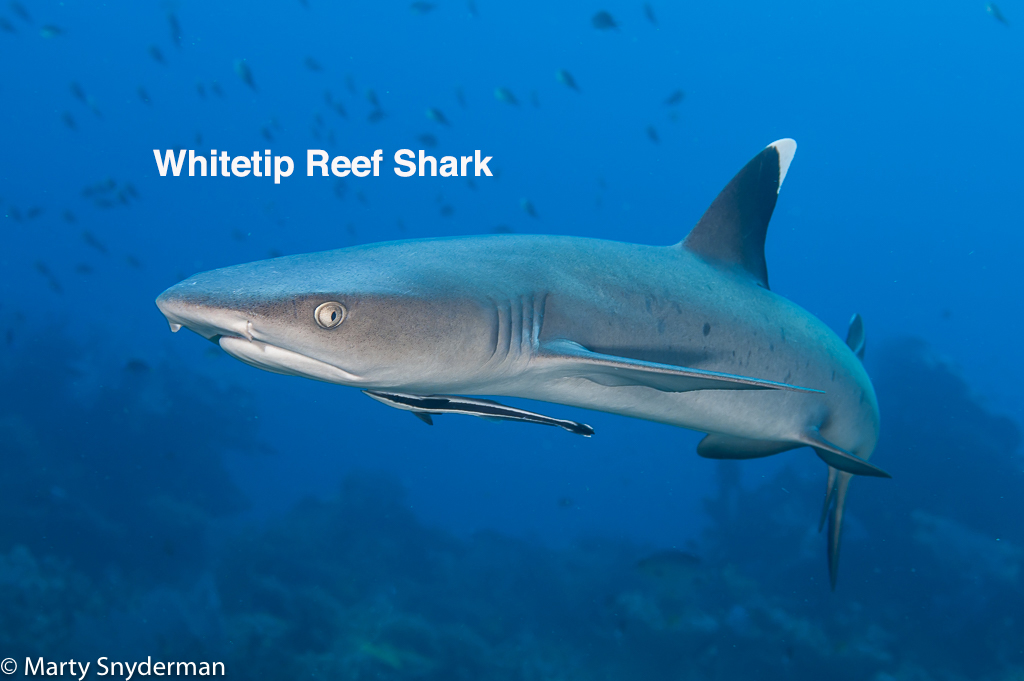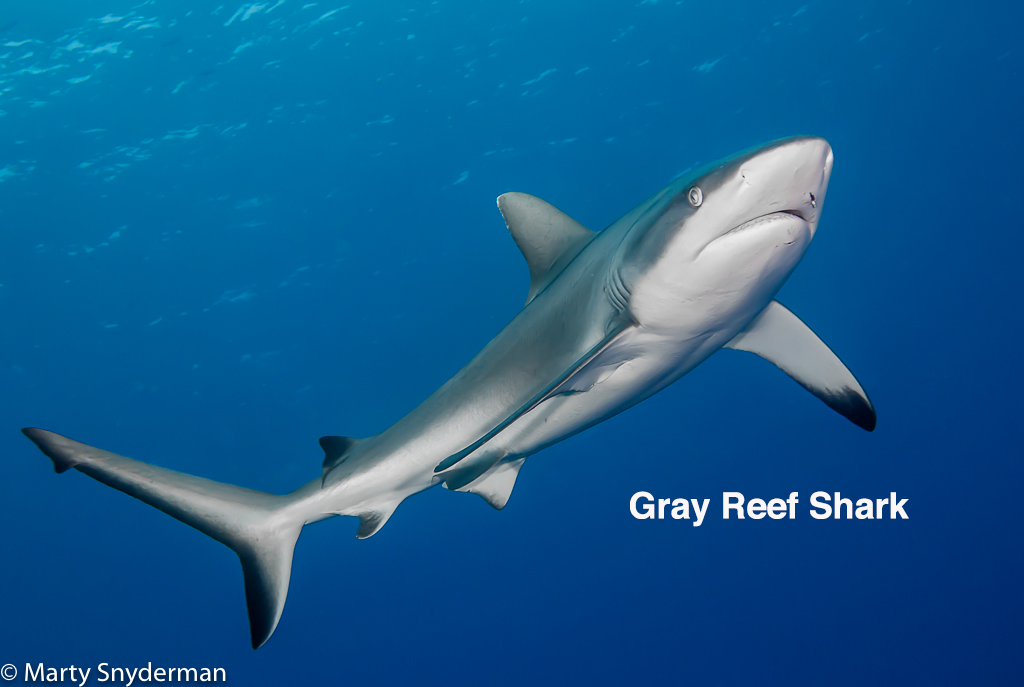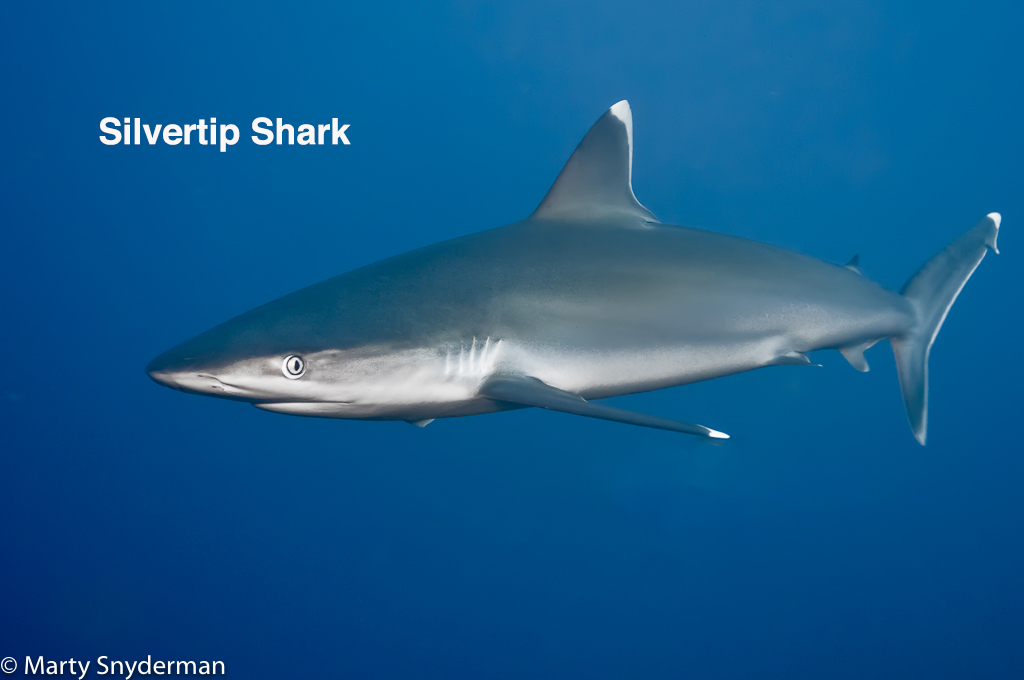Diving Adventures with Indo-Pacific Reef Sharks
Seeing one of these only happens once in a lifetime
In diving circles, sharks are held in high regard. Scuba diving adventures that include shark sightings, especially when the encounters are up close and personal, are remembered for a lifetime. So, it probably comes as no surprise that destinations with common shark sightings are highly sought after.
Several species of sharks are commonly encountered when scuba diving in Micronesia, Philippines, Fiji, Palau, Australia, Solomon Islands and other Indo-Pacific destinations that are served by Ultimate Dive Travel. While the species that are encountered vary depending on a number of factors, three species are seen on a regular basis in many of these spots. They are the whitetip reef, gray reef, and silvertip sharks. Here’s some info on how to find these guys on your next diving trip.
Whitetip Reef Shark

The whitetip reef shark, or Triaenodon obesus, inhabits reef communities over a wide swath of the tropical and sub-tropical Indo-Pacific and eastern Pacific Ocean water where they occur from the intertidal zone to a depth of roughly 130 feet. As its common name suggests, the whitetip reef shark displays prominent white markings on the tips of its fins. That said, it should be noted that oceanic silvertips also show white fin markings, so that feature should not be used as a single identifying characteristic.
Whitetips are relatively slender and supple. This feature makes it easier to identify them during a dive. Adult whitetips range from approximately four to seven feet in length. Their slender bodies and flexibility enable whitetips to pursue prey in cracks, crevices, and under ledges in the latticework of reefs where other larger, less flexible species, including and silvertips, cannot go.
Whitetips are generally considered to be nocturnal hunters. They often appear sluggish during the day and spend the majority of daylight hours resting on the sea floor. However, given the right opportunity, they will certainly spring into action to feed during the day. At night, they undergo an obvious personality change as they transform into active hunters. Under the cover of darkness, they work individually or in groups exploring holes, caves, cracks, and crevices in search of small fish, crustaceans, and octopi among other prey.
Gray Reef Shark

Gray reef sharks are among the most common sharks in many Indo-Pacific coral reef communities, while cruising over adjacent sand flats and along walls. They’re often observed in reef channels or on the reef face, especially in areas with a strong current.
The taxonomic name of the gray reef shark is Carcharhinus amblyrhynchos,. That name is derived from Greek words meaning, “sharp-nosed shark with blunt snout.” Gray reefs are very similar in shape but somewhat smaller in size than silvertip sharks, and the two species are often seen in close proximity to one another.
Strong black lines on the edge of their dorsal fins characterize gray reef sharks, and provide a good, but not perfect, feature when identifying the species underwater. Gray reefs reach maturity after seven years at an approximate length of four and one-half feet long. They have triangular-shaped teeth with very fine serrations. The small serrations are useful for slicing, cutting, ripping, and chewing small fish that they prey upon.
Documented prey fish include butterflyfish, coronetfish, needlefish, soldierfish, and surgeonfish, as well as moray eels. Gray reef sharks are also known to feed on some crustaceans and cephalopods. Gray reefs have been seen in schools of 20 to 100 sharks. These groups often cooperate to ambush schools of small fish.
Silvertip Shark

The silvertip shark, Carcharhinus albimarginatus, is considered to be especially beautiful by many shark enthusiasts. Silvertips live in association with reefs on continental shelves at offshore islands and offshore banks. They’re also found inside lagoons and near drop-offs from the surface to depths of roughly 2,600 feet. Silvertips are distributed over a wide range of the Indo-Pacific, but there are many places throughout the region where the species is absent.
The top of the body in silvertips varies from dark gray to bronze-ish with a white underbelly. So in terms of body color, a silvertip bears resemblance to the general description of many species of reef sharks. However, silvertips display prominent white margins at the tips and on the trailing edges of their fins. The snout of a silvertip is comparatively long and rounded. The pectoral fins are large and slightly arched, while the tips can be described as almost pointed.
Silvertips grow to a maximum length of just under 10 feet, likely weighing in the neighborhood of 300 pounds. Males mature when they reach a length of between five and six feet, while some females mature when they attain a length of just over five feet, and some even reaching 6.5 feet long.
Capable of lightning-fast bursts of speed and fast changes of direction, silvertips are very capable predators. They primarily feed on a variety of reef fish, wahoo, tunas, rays, other small sharks, squids, and octopi.
To add an exciting element to your next scuba diving adventure, ask the scuba travel agents at Ultimate Dive Travel for a diving special that’s likely to give you a chance to see some Indo-Pacific reef sharks. It’s sure to give you something to talk about the next time you get together with your diving buddies.
